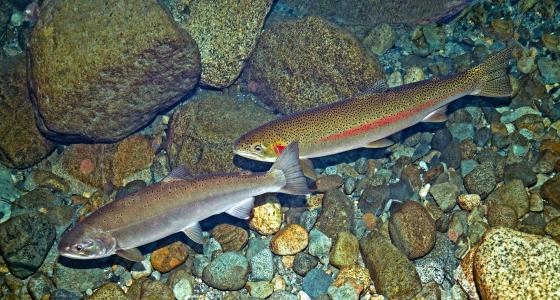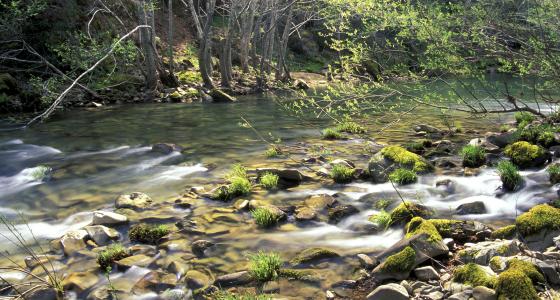Black Butte River
Black Butte River
California
The rugged Black Butte River flows through the Grindstone and Covelo Ranger Districts of the Mendocino National Forest. An additional wild river segment is included in the designation and encompasses 1.5 miles of Cold Creek from the Mendocino County line on the east to its confluence with the Black Butte River to the west. The Black Butte River terminates at its confluence with the Eel River, also a National Wild and Scenic River, in the vicinity of the Eel River Work Center and the Eel River Campground.
Steelhead are fairly numerous in addition to a limited number of Chinook salmon. However, the entire designated river corridor is closed to fishing to protect the juvenile steelhead trout. Terrain within the river corridor is rugged with limited access. Cultural resources are an important component of this wild and scenic river, and numerous cultural resource values associated with the Yuki Indians have been identified within the area.
Designated Reach
October 17, 2006. The segment from the Mendocino County line to its confluence with the Middle Eel River and Cold Creek from the Mendocino County line to its confluence with the Black Butte River.
Outstandingly Remarkable Values
Culture
The cultural prehistory and traditional use of the Black Butte River are outstandingly remarkable values. Prehistoric and current uses of the watershed and adjacent areas by the local Native American Tribes involve hunting, fishing, and gathering. Cultural and sacred aspects of the land are also important, and the peaks and high places within this watershed are believed to be spiritually significant. To Native Americans, hunting, fishing, and gathering are not purely recreational, and neither are they solely the means to acquire food or materials. Rather, these traditions are sacred cultural practices which are an integral part of their way of life.
Gathering is very important to the Round Valley Indian Tribes, and secrecy regarding the location of gathering sites is also very important to members of the tribes. Plants are gathered for food, basketry, and medicinal purposes. Black oak acorns and pennyroyal tea are gathered as traditional food sources, and riparian-associated species (sedge, willow, red dogwood, and redbud) are used for basketry.
Fish
The fish populations of Black Butte River are an outstandingly remarkable value because of the presence of the threatened northern California steelhead trout and the coastal Chinook salmon. This designation provides and protects a critical habitat that has been identified as essential in the recovery of the northern California steelhead and California coastal Chinook salmon populations. As part of the aquatic conservation strategy, key watersheds were identified and designated to provide a high-quality habitat, serving as a refuge network for salmon and other fish species. The wild and scenic river corridor is an important contribution towards fish population recovery and because of this, the California Department of Fish and Wildlife has prohibited fishing within the Black Butte watershed.
Geology
The geologic features and characteristics of the Black Butte River constitute outstandingly remarkable values in the context of the Northern California Interior Coast Range area. The Black Butte watershed is a great example of a tectonically active and landslide-driven landscape that has impacted the development of the Black Butte River. This river cuts through weak, altered, and deformed marine sedimentary rocks and around massive blocks of greenstone and greywacke. This directly results in landslides that can be massive in scale and significantly influence fluvial morphology with a significant input of large woody debris, sediment, and large stream-altering boulders. These factors have likely forced fish to adapt to exist in a rapidly developing river system with unique, geologically defined habitat. These landslides also formed unique boulder and tension crack caves within Black Butte Creek and the watershed that are closely linked to cultural resources and wildlife habitat.



